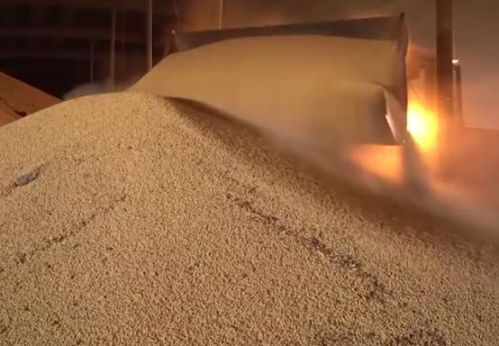Farmers respond to the revitalization of soybean subsidy of 340 yuan per mu under the Sino-US trade war.
Most of China's soybeans come from the United States, and most soybeans are imported from the United States. Under the influence of the Sino-US trade war, China will greatly increase the tax on American agricultural products, while China will have to adopt corresponding agricultural policies to increase the proportion of home-grown soybeans. According to the CCTV network: at present, there is a large area of spring sowing in Northeast China. The reporter learned from the Ministry of Agriculture and Village that this year, four provinces and regions in Northeast China and Huang-Huai-Hai region have seen a substantial increase in soybean planting area.

Recently, the reporter came to Hailun City, Heilongjiang Province, where he was busy with spring sowing. This year, Sun Anfu, a big grain grower, planted 1500 mu of land in his family with soybeans.
Sun Anfu said that before spring sowing last year, he did not know that the state would give soybean subsidies of 340 yuan per mu, which was 295 yuan higher than corn per mu. Later, he saw that soybean prices had been popular in the market, so he regretted planting less. This year he did not hesitate to aim at the policy. In Hailun City, known as the country's "hometown of soybeans," big growers all agreed to expand their soybeans this year.
Wang Baofeng, vice mayor of Hailun City: our soybean planting area this year has reached 2.6 million mu, an increase of 600000 mu over last year. The main reason for the increase in area is that the state has put forward a plan for the revitalization of soybeans, and farmers have seen the policy dividend; the second aspect is that the market price is good, and farmers feel that they have accounts and good benefits.
At the beginning of this year, the Ministry of Agriculture and Village issued the implementation Plan of Soybean Revitalization Plan. This year, China will expand the soybean planting area in Northeast China, Huang-Huai-Hai and Southwest China. We will strive to reach 140 million mu of soybean area by 2020 and 150 million mu in 2022, of which the soybean area will increase by 10 million mu in 2019.
Heilongjiang Province, which has the largest soybean planting area in China, released favorable policy signals to farmers before spring ploughing and preparation this year.
According to the latest agricultural dispatching data of the Ministry of Agriculture and villages, as of May 10, the country has sown 840 million mu of all kinds of crops, completing more than 60% of the intended area. Among them, soybeans have been sown. The planting area of Heilongjiang and Inner Mongolia has increased significantly.
- Prev

Spain's first batch of IGP origin certified oranges landed in Shanghai today.
Recently, the first batch of IGP certified Spanish TONO oranges will arrive in Shanghai Huizhan market. Spain is the largest producer and exporter of fresh oranges in the European Union. Its unique geographical location and superior Mediterranean climate are very suitable for citrus water such as oranges, oranges and lemons.
- Next

The California couple accused Roundup of causing cancer harm by the US court ordered Monsanto to pay compensation
Known for producing GM seeds and herbicides, Monsanto, the world's largest GM agricultural giant, has been strongly protested by environmental groups for many years, believing that the company has not only caused serious damage to the environment, but also caused serious damage to the environment.
Related
- A one-day flower show brings 130 million yuan in orders! Nanhai, this Phalaenopsis exhibition is amazing
- What do the flower language and meaning of Lutheran tree mean? Precautions for planting Lutheran tree
- Encounter Chaoshan Kongfu tea, not without this cup of Phoenix single clump
- The durian market in Vietnam and Thailand is flooded. The price of imported durian has plummeted by 30-40% in a month.
- Shanghai solved the problem of local vegetable supply by planting 80,000 mu of green leafy vegetables.
- Wageningen University has become the best agricultural university in the world for the seventh time in a row.
- The strongest export season of South African grapes is full of challenges, with exports to Russia falling sharply by 21%.
- Sri Lanka is on the verge of bankruptcy, "Tea for debt" Organic Agriculture Revolution aggravates the Food crisis?
- Turning waste into earthworm manure and worm manure into organic fertilizer-A new choice for auxiliary farming
- Organic rice growers shoulder the responsibility of nurturing agricultural talents! Yinchuan Sustainable Farm with Organic Life Camp

